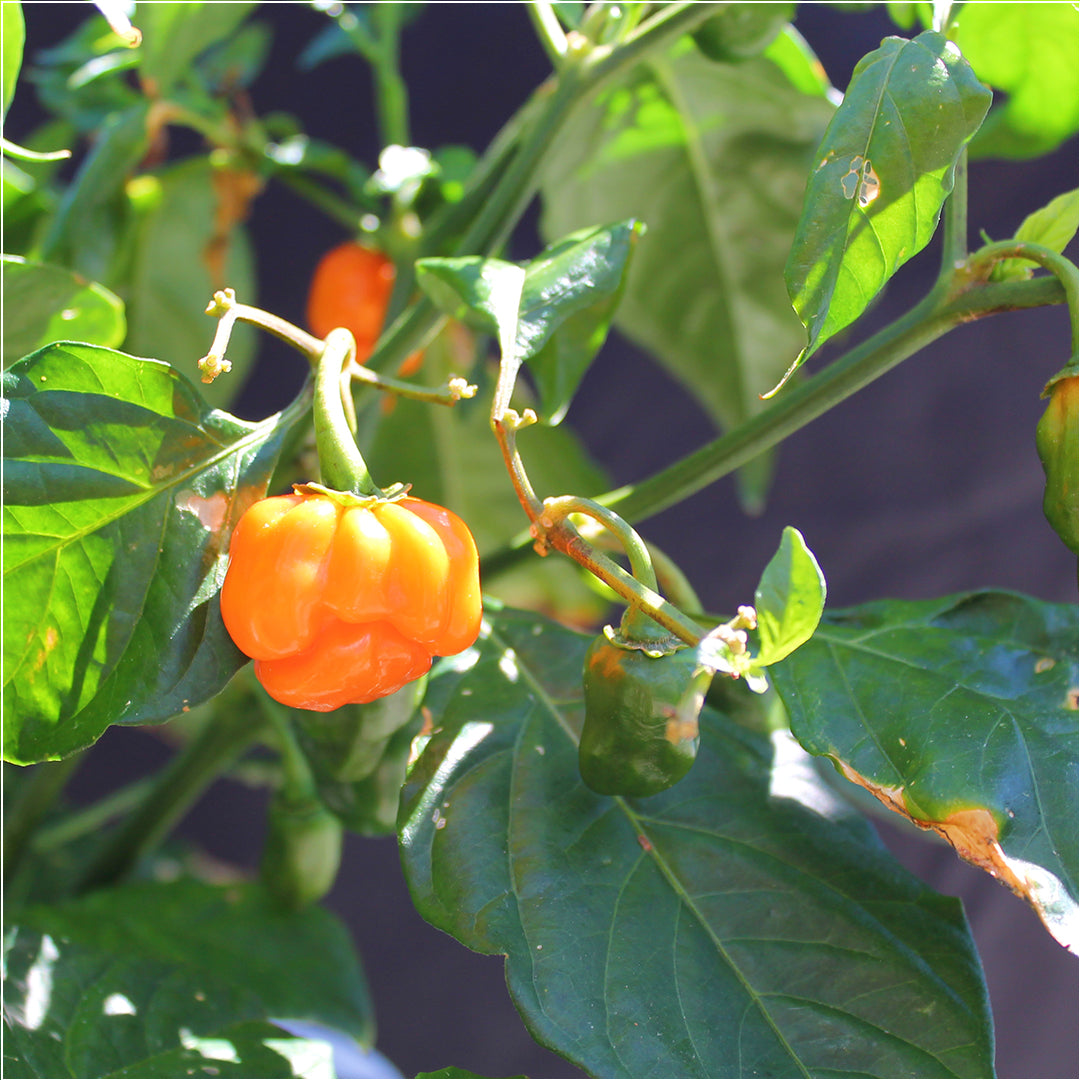Ignition Seed Company
Scotch Bonnet (Orange) Seeds
Scotch Bonnet (Orange) Seeds
Couldn't load pickup availability
General
General
Are you looking to add a touch of Caribbean heat to your cuisine? Look no further than the Orange Scotch Bonnet Chilli, a vibrant and fiery pepper that is sure to impress. In this article, we will discuss everything you need to know about cultivating, growing, and harvesting this unique chilli, as well as its heat levels, pests and diseases, and culinary uses.
Cultivation
Cultivation
To successfully cultivate Orange Scotch Bonnet Chilli, it's important to provide the plant with optimal growing conditions. This chilli thrives in warm and humid environments, such as those found in tropical regions like the Caribbean. When planting, ensure the soil is well-draining and fertilize the plant regularly with a balanced fertiliser. The plant requires full sun exposure and consistent watering. Keep in mind that this slow-growing plant may take several months to reach maturity.
Growing
Growing
The Orange Scotch Bonnet Chilli plant typically grows to a height of 60-90cm, although it can grow taller under ideal conditions. The plant has green and glossy leaves and produces delicate white flowers that give way to fruit. The chilli pods start out green and ripen to a vibrant orange hue. The pods are slightly wrinkled and typically have a diameter of 2-3cm. The heat level of the Orange Scotch Bonnet Chilli ranges from 80,000 to 400,000 Scoville units.
Harvesting
Harvesting
After several months of growth, the Orange Scotch Bonnet Chilli pods will be ready for harvest. It's typically best to wait until the pods have turned a bright orange hue. Harvest the pods carefully by cutting them from the plant with pruning shears. When harvesting, take care to avoid damaging the plant itself, as this can impact future growth.
Heat Levels
Heat Levels
The Orange Scotch Bonnet Chilli is known for its intense heat. With a Scoville rating of between 80,000 to 400,000, it is considered a medium heat chilli. For comparison, the jalapeño pepper typically measures between 2,500 to 8,000 Scoville units, making the Orange Scotch Bonnet Chilli significantly hotter.
Pests and Diseases
Pests and Diseases
Like many plants, the Orange Scotch Bonnet Chilli is susceptible to certain pests and diseases. Some common pests that may affect this plant include aphids and spider mites. To prevent these pests, keep your plant well-watered and consider using a natural pesticide if necessary. Diseases such as blossom end rot and leaf spot can also impact this plant, so it's important to monitor the plant carefully for any signs of these issues.
Dishes
Dishes
The Orange Scotch Bonnet Chilli is a staple of Caribbean cuisine, adding a distinctive flavor and heat to dishes such as jerk chicken, curries, and stews. It's also popular in hot sauce production and can be used as a garnish to add a pop of color to dishes. Whether you're looking to add a touch of heat to your cooking or create a unique and flavorful hot sauce, the Orange Scotch Bonnet Chilli is sure to impress.
| Heat Level: | 80,000 – 400,000 SHUs |
| Type: | Medium |
| Species: | Capsicum Chinense |
| Origin: | Caribbean |
| Days to Harvest: | 100+ days |
| Seeds per Pack: | 10+ pepper seeds |
Share




Haven’t yet planted them but very excited and hoping for a big crop so I can make lots of Jamaican beans and rice!!!
Haven’t yet planted them but very excited and hoping for a big crop so I can make lots of Jamaican beans and rice!!!




